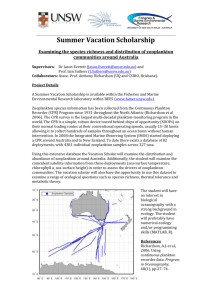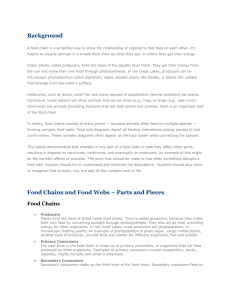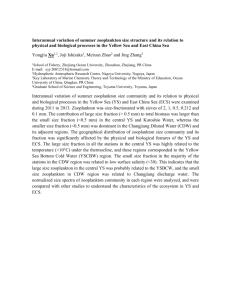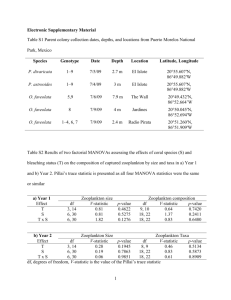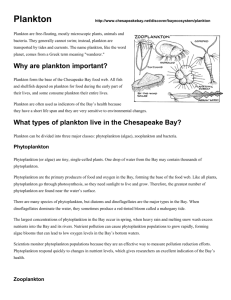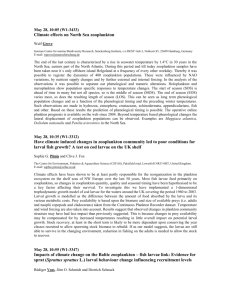Unit 1
advertisement
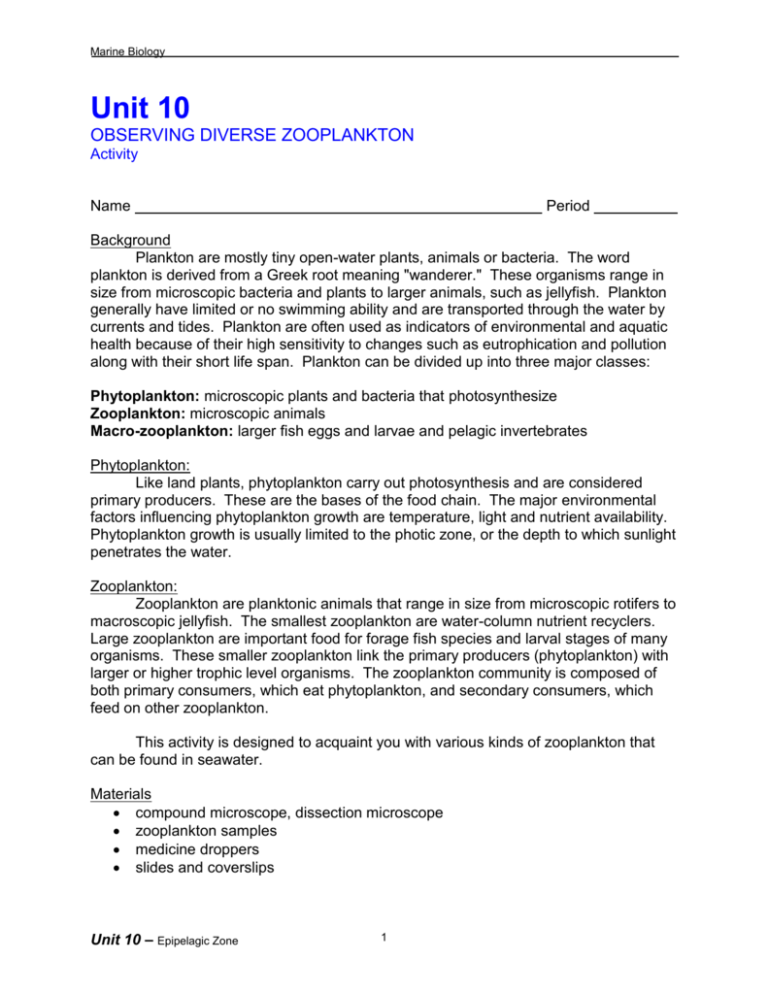
Marine Biology Unit 10 OBSERVING DIVERSE ZOOPLANKTON Activity Name Period Background Plankton are mostly tiny open-water plants, animals or bacteria. The word plankton is derived from a Greek root meaning "wanderer." These organisms range in size from microscopic bacteria and plants to larger animals, such as jellyfish. Plankton generally have limited or no swimming ability and are transported through the water by currents and tides. Plankton are often used as indicators of environmental and aquatic health because of their high sensitivity to changes such as eutrophication and pollution along with their short life span. Plankton can be divided up into three major classes: Phytoplankton: microscopic plants and bacteria that photosynthesize Zooplankton: microscopic animals Macro-zooplankton: larger fish eggs and larvae and pelagic invertebrates Phytoplankton: Like land plants, phytoplankton carry out photosynthesis and are considered primary producers. These are the bases of the food chain. The major environmental factors influencing phytoplankton growth are temperature, light and nutrient availability. Phytoplankton growth is usually limited to the photic zone, or the depth to which sunlight penetrates the water. Zooplankton: Zooplankton are planktonic animals that range in size from microscopic rotifers to macroscopic jellyfish. The smallest zooplankton are water-column nutrient recyclers. Large zooplankton are important food for forage fish species and larval stages of many organisms. These smaller zooplankton link the primary producers (phytoplankton) with larger or higher trophic level organisms. The zooplankton community is composed of both primary consumers, which eat phytoplankton, and secondary consumers, which feed on other zooplankton. This activity is designed to acquaint you with various kinds of zooplankton that can be found in seawater. Materials compound microscope, dissection microscope zooplankton samples medicine droppers slides and coverslips Unit 10 – Epipelagic Zone 1 Marine Biology Procedures 1. Prepare a wet mount slide of plankton. Use a medicine dropper to put 1 to 2 drops of your plankton sample on a glass slide. Place a coverslip over the slide. Make sure the bottom of your slide is dry. 2. Place the slide on the stage of a microscope and observe under low power. 3. Focus with the coarse adjustment. Move the slide around until you see something that moves. 4. In the space provided below, make sketches of each of the zooplankton you observe. Locate and sketch as many zooplankton as you can in the allotted time. You may want to ask your teacher to help you try to identify them. Unit 10 – Epipelagic Zone 2 Marine Biology Observations and Analysis 1. Why might you have difficulty finding zooplankton in a bucket of seawater? 2. How would you know that the organism you observe is a type of zooplankton or phytoplankton? 3. Why is it more difficult to find zooplankton under high power than under low power? Unit 10 – Epipelagic Zone 3


